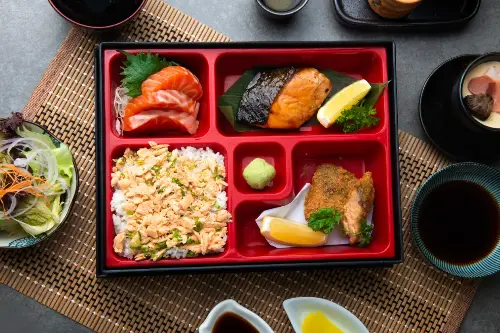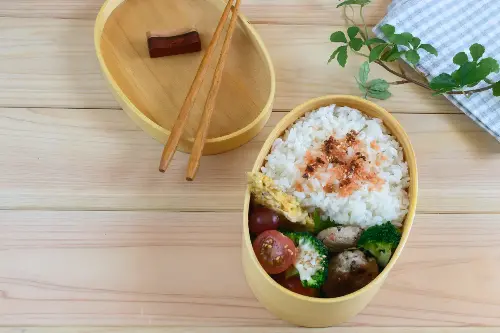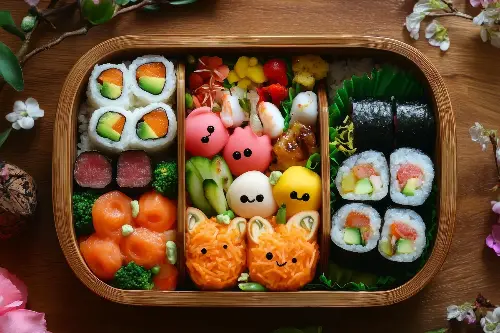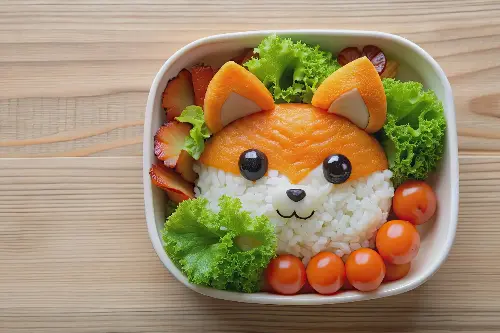Bento, the quintessentially Japanese meal-in-a-box, is a harmonious blend of taste, nutrition, and art that reflects the Japanese ethos of balance and beauty in all things. Intricately arranged and thoughtfully prepared, the bento box isn’t just a meal; it’s a canvas where culinary aesthetics and flavours come together in a compact, portable form.

Origins of Bento: A Journey Through Time
While bento may seem like a modern convenience, its roots are steeped in ancient history, dating back as far as the fifth century. The term "bento" originates from a slang term meaning "convenient" or "convenience." During the Kamakura Period (1185–1333), cooked and dried rice, known as hoshi-ii, was developed, making it easier for people to store and transport rice.
As Japan moved into the Azuchi-Momoyama period (1568–1600), bento culture began to flourish. It became common for people to carry meals with them to the theatre or when viewing cherry blossoms. These outings evolved the bento into a more elaborate affair, sometimes featuring wooden lacquered boxes that showcased the wealth and status of its bearers.
During the Edo period (1603-1868), bento truly became part of everyday life. The makunouchi bento, which translates to "between-act bento," was created for theatre-goers who enjoyed meals during intermissions. The contents of these meals were reflective of the season and the occasion, creating a connection between the eater and the natural world around them.

Cultural Significance and Evolution
Bento boxes, throughout history, have been a reflection of the changing tastes and societal norms in Japan. In the early 20th century, the ekiben, a bento sold at train stations, became popular for long train journeys, adapting to the needs of travellers and commuters. The endearing character of bento boxes endures, as they cater to a variety of occasions, from picnics to work lunches, and are tailored to suit the nutritional needs and preferences of everyone from school children to office workers.
The Design Philosophy: Harmony and Contrast
The philosophy of a bento rests on the principles of ‘Washoku’ — traditional Japanese dietary cultures. Aesthetic elements are just as crucial as nutritional balance, making the crafting of a bento box a disciplined culinary art. Seasonal ingredients are chosen and cooked in ways that enhance their natural colours and flavours. The presentation is meticulously planned to represent a harmony of colours, with red, green, yellow, black, and white frequently appearing to symbolize different natural elements.
A bento box is generally divided into portions that meet the ideal ratio for a balanced meal: one-quarter protein, one-quarter carbs, and the remaining half made up of fruits and vegetables. Just like the ingredients, colours, and flavours, the nutritional components are carefully balanced to provide a wholesome meal that satisfies both the body and the eyes.

Bento in the Modern Day
Today’s bento boxes have evolved with modern lifestyles, yet they still retain their fundamental traditional essence. In Japan, making bento can be a daily ritual for homemakers, a creative outlet for expressing love and care for their family. For the on-the-go professional or student, convenience stores and supermarkets offer a wide array of ready-to-eat bento boxes, aligning with contemporary needs.
The global popularity of bento has grown significantly, with bento-making gaining interest as a hobby worldwide. International variations include the Korean dosirak, Hawaiian plate lunch, and the Taiwanese biandang, each adapting the concept to local tastes.

Sustainable and Eco-Friendly
Bento boxes not only offer a sense of nostalgia and connection to a rich cultural tradition but also align with modern ideals of sustainability. The use of reusable containers can reduce plastic waste from single-use packaging. Many bento enthusiasts take pride in preparing ‘mottainai bento’, a concept which entails using leftovers or cooking in bulk to avoid food waste, embodying an environmental consciousness that is increasingly important in today’s world.
The depth and detail of Japan’s bento culture are a testament to the country’s dedication to culinary artistry and mindful eating. Offering more than just sustenance, bentos are a celebration of seasonal awareness, art, balance, and thoughtfulness. As they adapt to the new rhythms of modern life, these elegant meals continue to captivate the imagination and palates of people around the globe, one beautifully packed box at a time.
